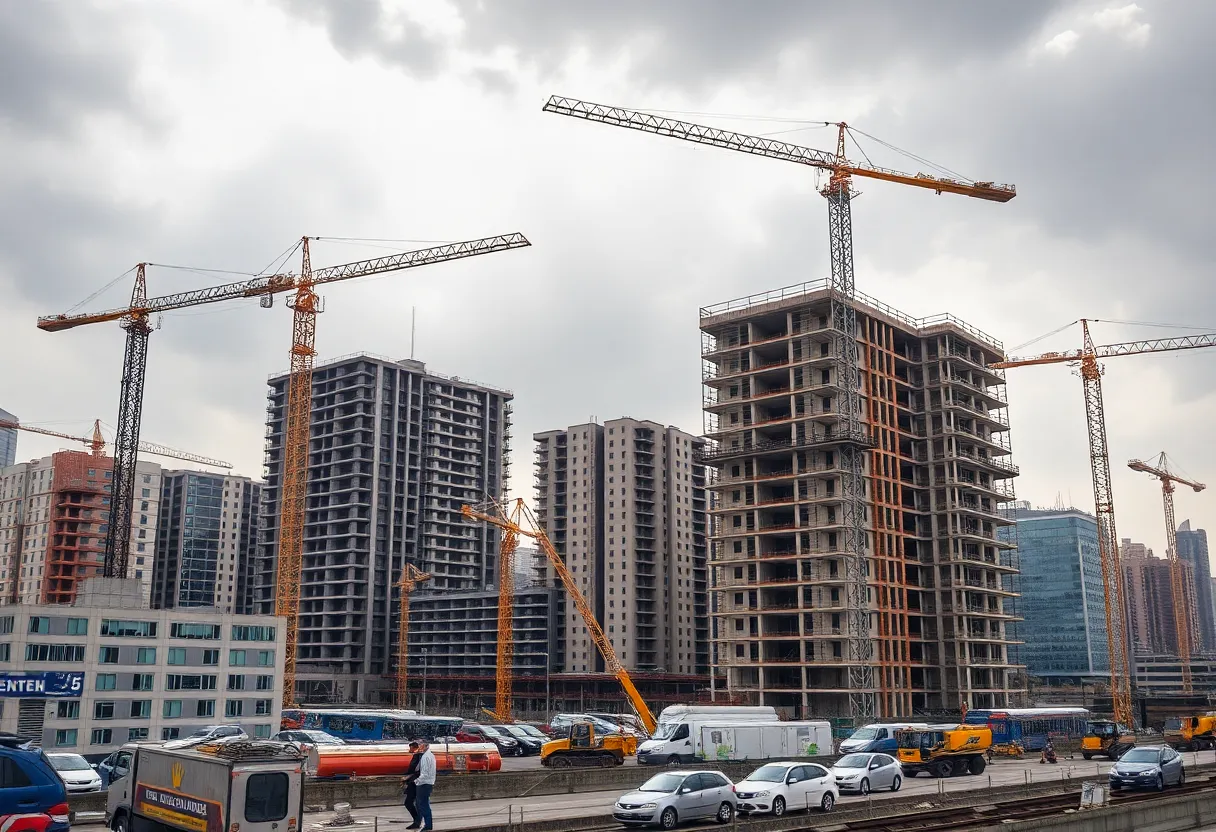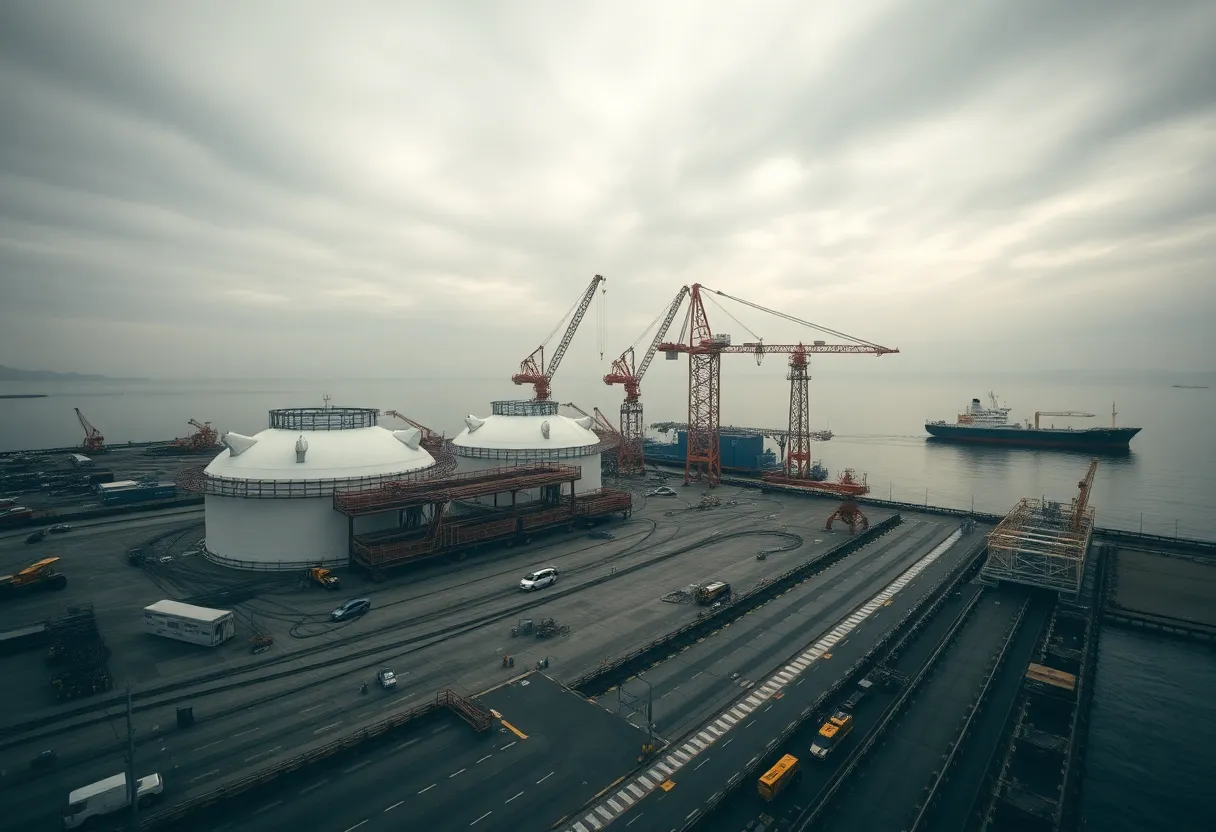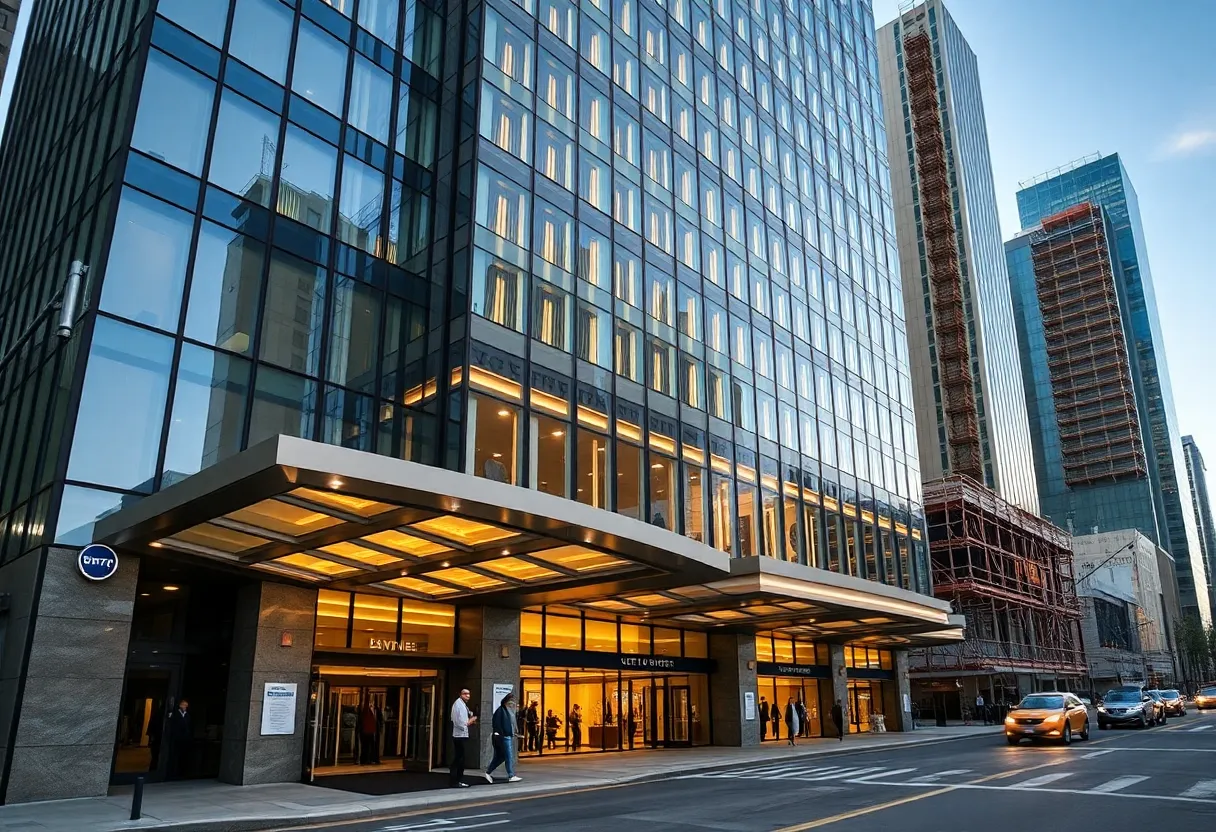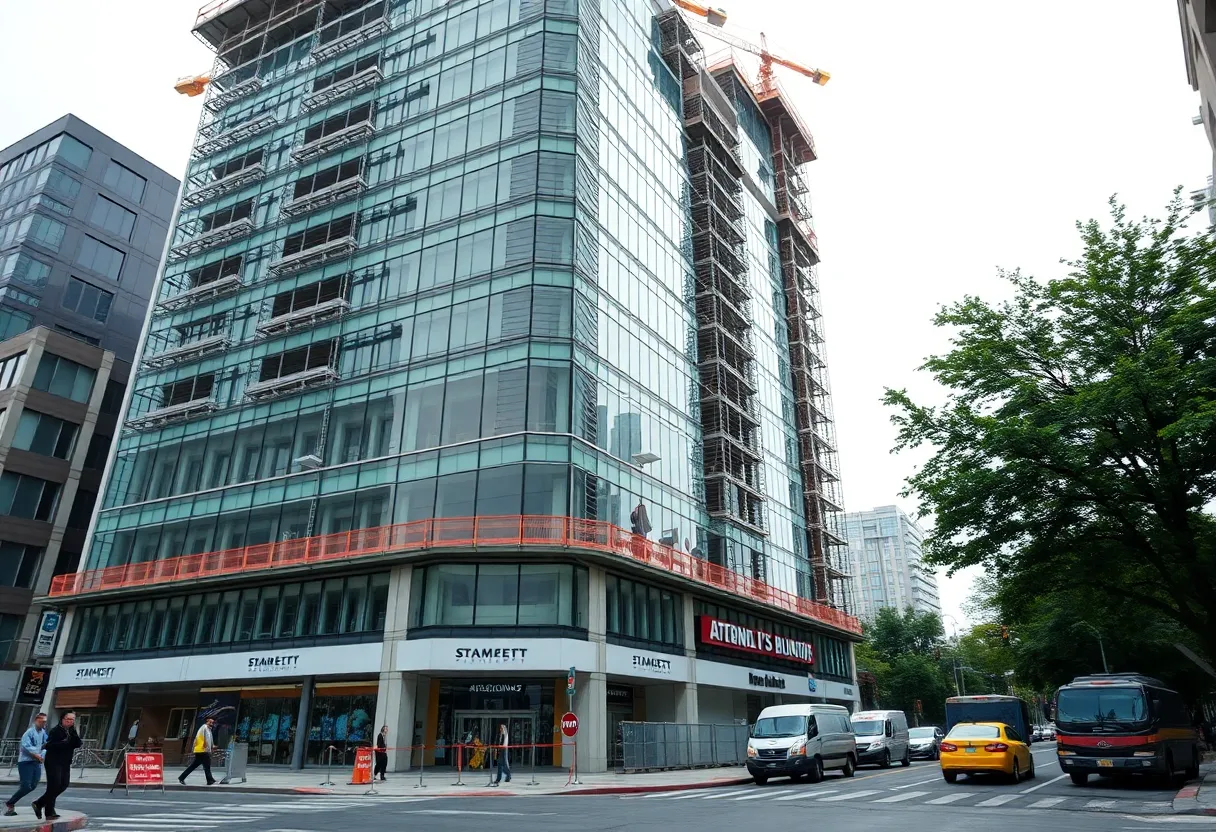United States, September 4, 2025
News Summary
Construction spending in the U.S. decreased by 0.1% in July, totaling an annualized rate of $2.14 trillion. This decline is driven by reduced investment in private nonresidential and multifamily projects, compounded by labor shortages and tariff impacts. While public nonresidential spending increased, single-family home construction showed only a slight uptick. Experts predict ongoing challenges for the industry as new residential construction permits drop, reflecting a softening market with significant hurdles ahead.
U.S. Construction Spending Dips 0.1% in July Amid Labor Shortages and Tariff Impacts
The latest monthly data show that construction spending in July slipped 0.1% from June, landing at a seasonally adjusted annual rate of $2.14 trillion. The decline is largely tied to softer activity in private nonresidential and multifamily construction, even as single-family homebuilding and public infrastructure spending rose. This combination of weaker private activity and steadier public work paints a mixed picture for the industry as it moves into the second half of the year.
Looking inside the July numbers, commercial construction fell by 0.9%, while manufacturing and private power construction declined by 0.7%, and multifamily projects slipped by 0.4%. In contrast, single-family homebuilding rose by a small margin, up 0.1%, helping to temper the overall drop in spending.
Year over year, the picture shifts toward weakness in some private sectors and strength in others. Private nonresidential construction spending is down by 3.7% over the past year, while public nonresidential spending has stepped up by 3.1% in the same period. Overall, the broader category of total construction spending has fallen by 2.8% compared with July 2024. Separately, new home sales declined by 8.2% in July from a year earlier, signaling softer demand in the housing market even as some permit activity suggests possible future shifts in spending patterns.
Within the housing data, new residential construction permits declined in July, while starts increased. That combination can suggest a lag between permitting decisions and actual construction starts, creating a potential window of shifting spending in the coming months. The pattern points to a cooling market for some home segments even as others show resilience.
On the industry response side, a survey from the Associated General Contractors of America (AGC) shows ongoing pressures from tariffs and labor shortages. Sixteen percent of contractors reported that projects were canceled, deferred, or scaled back due to demand changes tied to tariff policy. Meanwhile, labor shortages created delays for about 45% of firms surveyed. Another 26% indicated that policy changes such as federal funding, taxes, and regulations affected their projects. These figures illustrate a cautious environment where policy and labor constraints directly influence project feasibility and schedules.
Analysts note that the market environment remains mixed. The American Institute of Architects (AIA) reported a billings index score of 46.3 in July, signaling softer activity in architecture firms. The index has stayed below the neutral threshold of 50 in most recent months, with 31 of the past 34 months registering below that level. This pattern underscores a prolonged period of modest demand for architectural design services, even as construction activity is funded and planned.
Industry commentary from AGC’s chief economist highlights a persistent downward trend, noting that no private subsegment maintained momentum through early 2025. The consensus among forecasters is that the construction sector will face a challenging path through the second half of the year, with the potential for further declines in activity if labor shortages persist and tariff-related costs remain elevated. In this environment, policy certainty is seen as a key to unlocking new construction projects and stabilizing momentum.
The broader market backdrop includes a price trend signal from the S&P CoreLogic Case-Shiller Index, which showed a 1.9% year-over-year increase in national home prices in July. While this marks the slowest growth rate since the summer of 2023, it confirms that housing costs remain elevated, adding another layer of complexity for builders weighing new projects against market demand.
In short, July data depict a mixed but cautious construction landscape: a modest dip in overall spending, weakness in several private sectors, resilience in single-family and some public work, and a strong call for policy clarity to support new projects amid ongoing labor and tariff challenges. The industry appears positioned for a tentative second half as markets absorb tariff effects and labor constraints while builders reassess project timing and funding in light of evolving policy signals.
Key takeaways at a glance
- Total July spending down 0.1% to $2.14 trillion (SAAR).
- Private nonresidential down 3.7% YoY; public nonresidential up 3.1% YoY.
- Commercial -0.9%; manufacturing and private power -0.7%; multifamily -0.4%; single-family +0.1% in July.
- Labor shortages delay projects for about 45% of firms; tariff impact linked to 16% of cancellations/deferrals.
- AIA billings index 46.3 in July; ABI below 50 for most of the past 34 months.
- Permits vs starts — permits fell, starts rose; new home sales down 8.2% YoY.
- Policy certainty called out as necessary to sustain new construction amid tariff and labor pressures.
- Case-Shiller prices up 1.9% YoY; slowest growth since mid-2023.
Frequently Asked Questions
- What caused the July spending dip?
- The total construction spending declined by 0.1% from June due to decreases in private nonresidential and multifamily activity, while single-family and public infrastructure spending rose.
- Which sectors declined most in July?
- Commercial construction (-0.9%), manufacturing and private power (-0.7%), and multifamily (-0.4%) saw declines, while single-family construction rose slightly (+0.1%).
- How did tariffs and labor shortages affect projects?
- Tariff-related changes led to cancellations, deferrals, or scale-backs for some projects (about 16%), and labor shortages caused delays for about 45% of firms surveyed.
- What happened with residential permits and starts?
- New residential construction permits fell in July, while starts increased, suggesting possible shifts in future spending and project timing.
- What does the AIA billings index indicate?
- The July billings index of 46.3 points to softer activity in architecture firms, with the index remaining below the neutral threshold of 50 for most recent periods.
- What is the outlook for the second half of the year?
- Analysts expect ongoing challenges and potential further declines in activity if labor shortages persist and tariff costs remain high, making policy certainty a key factor for future projects.
- How did home prices perform?
- National home prices rose by 1.9% year over year in July, the slowest pace since mid-2023, indicating continued price pressures in the housing market even as some activity fluctuates.
Deeper Dive: News & Info About This Topic
Additional Resources
- Construction Dive
- Tri-Cities Business News
- Business Record
- Quartz
- MDM
- Wikipedia: Construction Industry
- Google Search: U.S. construction spending
- Google Scholar: Construction spending
- Encyclopedia Britannica: Construction
- Google News: Construction spending July 2025





